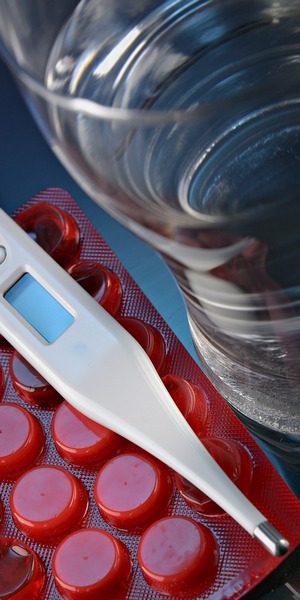Unraveling the Connection: Secondary Conditions To Hypertension

Millions of individuals throughout the world are affected with hypertension that sometimes is referred to as high blood pressure. It is characterized by chronically high blood pressure levels, which, if unchecked, can cause significant problems. Because it frequently manifests without any obvious symptoms, hypertension is frequently referred to as a silent killer, making it essential to adequately monitor and control it.
This article will examine hypertension’s less well-known link with secondary diseases. Secondary hypertension develops as a result of an underlying medical issue, whereas primary hypertension has no clearly identified cause. Since they can considerably contribute to the onset and course of these secondary disorders, understanding them is crucial.
Understanding Secondary Hypertension
Differentiating Primary and Secondary Hypertension
The most common kind of high blood pressure is primary hypertension, sometimes referred to as essential or idiopathic hypertension. It is responsible for 90–95 percent of all instances of hypertension. Primary hypertension, in contrast to secondary hypertension, lacks a clear etiology. A number of genetic, environmental, and lifestyle variables, including age, family history, obesity, high salt consumption, and a sedentary lifestyle, can have an impact.
Secondary hypertension, on the other hand, is defined by elevated blood pressure that is brought on by an underlying medical problem. These ailments might include things like renal problems, endocrine issues, heart problems, or drugs. By treating the underlying cause, secondary hypertension is frequently curable or efficiently controlled, unlike initial hypertension.
For a number of reasons, it is extremely important to identify and treat secondary causes of hypertension:
- First, improved management of high blood pressure may result from recognizing and treating the underlying problem. By focusing on the underlying cause, medical practitioners can more successfully treat or manage hypertension by implementing certain medications or procedures. This strategy could also include managing hormone imbalances, addressing cardiovascular issues, or treating renal illness;
- Second, being aware of secondary hypertension might assist avoid problems brought on by untreated or uncontrolled high blood pressure. The risk of organ damage, heart disease, stroke, and other associated problems can be reduced by treating the underlying disorder;
- Finally, developing specialized treatment approaches for each patient requires understanding the secondary causes of hypertension. Different underlying illnesses could call for particular strategies, such as modifying pharmaceutical regimes, making lifestyle changes, or thinking about surgical procedures. Healthcare practitioners can develop individualized treatment plans that address both the underlying illness and related hypertension by recognizing the secondary causes.
Secondary Conditions Linked to Hypertension
Kidney Causes:
1. CKD, or chronic kidney disease
The common ailment known as chronic kidney disease (CKD) is characterized by a progressive decline in kidney function over time. CKD and hypertension are strongly associated with one another. In actuality, hypertension contributes to and results from CKD. According to statistics, 70–80% of those with CKD also have hypertension. Elevated blood pressure levels can result from CKD because it affects the kidneys’ capacity to control blood pressure;
2. Renal artery obstruction
Narrowing of the arteries that feed blood to the kidneys is referred to as renal artery stenosis. The control of blood pressure may be significantly impacted by this disorder. The renal arteries narrow, which limits blood flow to the kidneys. The body reacts by raising blood pressure as a compensating measure to make sure the kidneys receive enough blood. Atherosclerosis, fibromuscular dysplasia, and certain hereditary disorders are common risk factors for renal artery stenosis.
Endocrine Causes:
1. First-stage aldosteronism
A hormonal condition known as primary aldosteronism is characterized by an excessive amount of aldosterone produced by the adrenal glands. Blood pressure and fluid balance in the body are both controlled by aldosterone. Aldosterone overproduction can cause potassium loss and sodium retention, which can result in hypertension. Blood tests, imaging scans, and confirmatory testing are some of the diagnostic techniques used to identify primary aldosteronism. Depending on the underlying reason, treatment options can include taking medication to inhibit the effects of aldosterone or having surgery;
2. Having Cushing’s syndrome
Long-term exposure to high amounts of cortisol, an adrenal gland-produced hormone, results in Cushing’s syndrome. By encouraging salt retention, decreasing blood vessel function, and interfering with hormone balance, too much cortisol can raise blood pressure. Weight gain, high blood sugar, physical weakness, and mood swings are some signs of Cushing’s syndrome. Cushing’s syndrome is often treated by treating the underlying cause, such as by removing the tumor or changing the drug;
3. Hyperthyroidism
The term “hyperthyroidism” describes a condition in which the thyroid gland is overactive and produces too many thyroid hormones. By raising heart rate, cardiac output, and peripheral vascular resistance, this disease can cause hypertension. Hyperthyroidism frequently manifests as a quick heartbeat, weight loss, anxiety, and exhaustion. Hyperthyroidism can be treated with medication, radioactive iodine treatment, or thyroid surgery, with blood pressure often returning to normal once thyroid function is stabilized.
Cardiovascular Disease Causes:
1. Coarctation of the aorta
The primary artery that distributes oxygen-rich blood from the heart to the rest of the body, the aorta, narrows as a result of aortic coarctation, a congenital heart condition. Increased blood pressure in the upper body and decreased blood flow to the lower body may result from this constriction. Aortic coarctation can cause hypertension because it increases blood flow resistance. Imaging tests including magnetic resonance imaging (MRI) and echocardiography are used as diagnostic tools. The narrowing may be repaired surgically or medically using various treatment methods;
2. Apneic sleep
A sleep disorder called sleep apnea is characterized by breathing interruptions while you’re asleep. Hypertension and sleep apnea have a close relationship. When breathing is disturbed repeatedly during sleeping, this can increase the activity of the sympathetic nervous system and cause oxidative stress, inflammation, and high blood pressure. Continuous positive airway pressure (CPAP) therapy, dietary changes, and surgical procedures are all potential treatments for sleep apnea. Blood pressure levels can be regulated with the aid of effective sleep apnea therapy.
Other Contributing Factors
Drugs and Lifestyle Decisions
Hypertension may be brought on by or made worse by some drugs. These may consist of:
- Nonsteroidal anti-inflammatory medicines (NSAIDs): NSAIDs can raise blood pressure. Examples include ibuprofen and naproxen;
- Oral contraceptives: Some hormonal birth control tablets, particularly in women who are already at risk, may cause blood pressure to rise;
- Blood pressure can be increased by over-the-counter decongestant drugs like pseudoephedrine;
- Corticosteroids: Chronic corticosteroid usage may result in hypertension.
In addition, lifestyle decisions have a big impact on how hypertension develops and is treated. Smoking and drinking too much alcohol are unhealthy behaviors that can raise blood pressure levels. While excessive alcohol consumption can raise blood pressure and reduce the efficacy of medicines, smoking causes blood arteries to constrict, which raises blood pressure.

Depression and Stress
Hypertension has been associated with chronic stress, anxiety, and mental health issues. Stress, mental health, and hypertension all have intricate and reciprocal relationships.
Chronic stress sets off physiological reactions that might exacerbate hypertension. Cortisol and adrenaline, which speed up the heartbeat and tighten blood vessels, raise blood pressure when the sympathetic nervous system is activated by stress.
An elevated risk of developing hypertension is also linked to mental health problems including anxiety and depression. The complex reasons driving this link might be due to behavioral traits, inherited susceptibilities, or changes in the body’s stress response mechanisms.
For appropriate blood pressure levels to be maintained, stress management is essential. The effects of stress on blood pressure can be lessened by using stress-reduction practices including mindfulness meditation, deep breathing exercises, regular exercise, and seeking assistance from loved ones or mental health specialists.
Contributing Factors Description Medications – Certain medications can cause or exacerbate hypertension. – NSAIDs, oral contraceptives, decongestants, corticosteroids Lifestyle Choices – Unhealthy habits like smoking and excessive alcohol consumption can contribute to elevated blood pressure. Stress and Mental Health – Chronic stress and mental health conditions are associated with an increased risk of developing hypertension. – Stress activates physiological responses that can elevate blood pressure. – Mental health conditions may contribute to hypertension through various mechanisms. – Effective stress management techniques can help reduce the impact on blood pressure.
Conclusion
In conclusion, the key to properly controlling high blood pressure is to be aware of the conditions that are connected to it. Secondary hypertension results from underlying medical issues, whereas primary hypertension, which is the most prevalent kind, lacks a clear etiology. Individuals and healthcare professionals can enhance hypertension therapy and avoid potential problems by identifying and addressing these secondary causes.
The necessity for a thorough assessment is highlighted by the frequency of secondary illnesses linked to hypertension, such as chronic kidney disease, renal artery stenosis, primary aldosterones, Cushing’s syndrome, hyperthyroidism, aortic coaptation, and sleep apnea. It is possible to regulate blood pressure better and lower the risk of consequences by recognizing and treating certain problems.
To achieve the best results, secondary causes must be promptly identified and effectively managed. Medical professionals are essential in making accurate diagnoses and creating treatment programs that are specific to the underlying problem. Consequently, it is crucial for people with hypertension to speak with their healthcare providers for a full examination in order to identify any secondary reasons and create a multifaceted management strategy.
People can actively lower their blood pressure by being aware of the interaction between hypertension and secondary diseases. For long-term hypertension control and general cardiovascular health, lifestyle changes, adherence to prescription medications, stress management measures, and routine follow-ups with medical specialists are essential.







